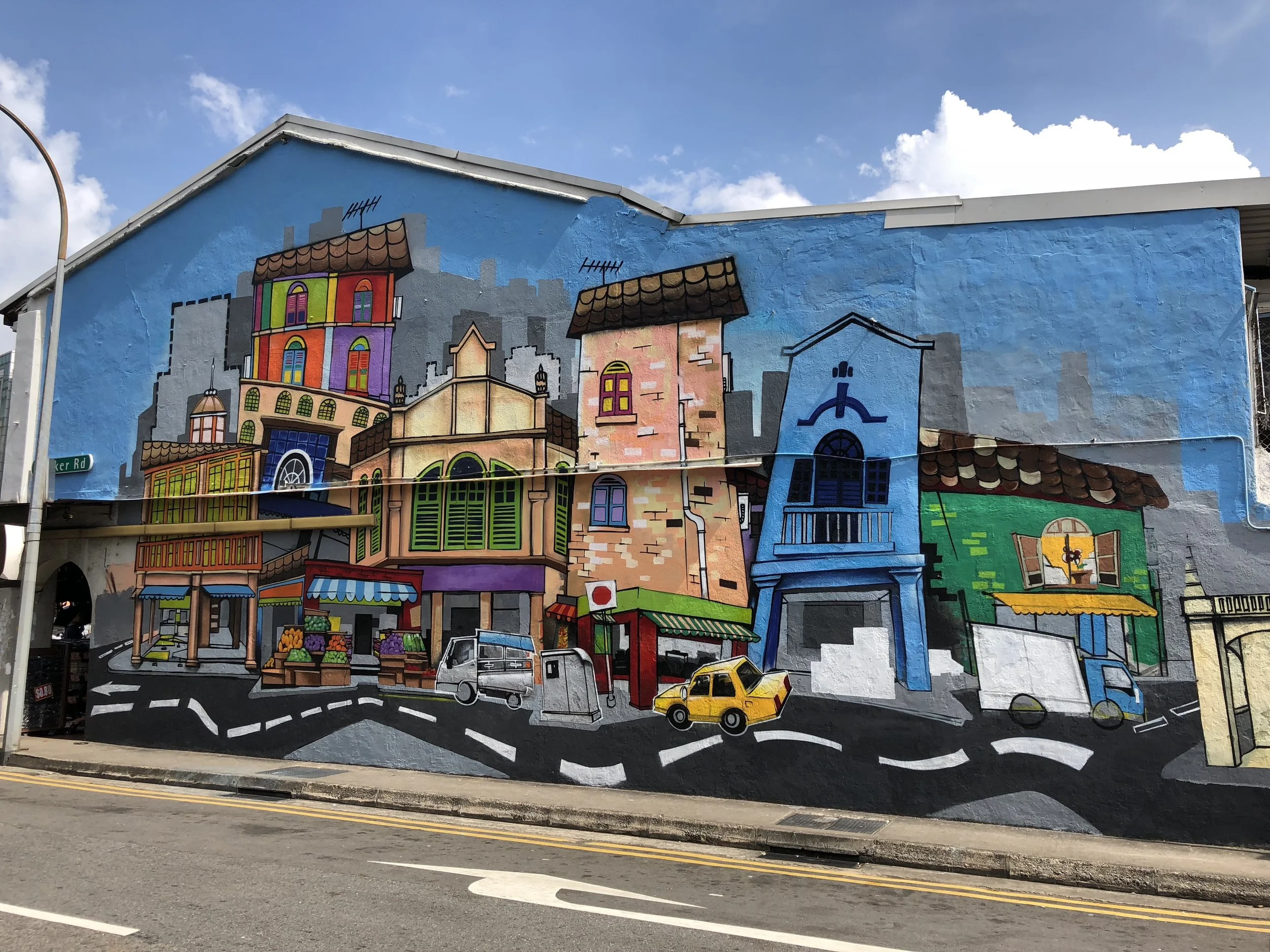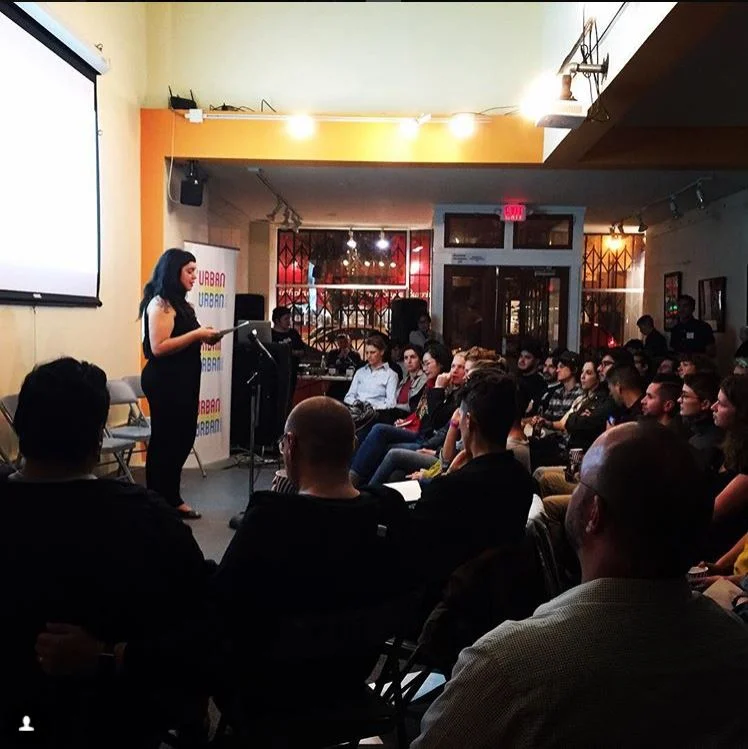Little India: It takes a community to paint a mural
By Paul Chu
In the last few years, the Little India precinct in Singapore has become visibly more vibrant, with more colorful wall murals and art installations sprouting throughout the neighborhood. Little India is one of the most culturally- and historically-significant neighborhoods of Singapore. As its name suggests, Little India’s heritage is predominantly Indian. It was the hub for cattle-trading in the 19th Century and is home to the iconic Sri Veeramakaliamman Temple and Sri Perumal Temple built in the mid 1800s. However, embodying Singapore’s multicultural character, Little India is not solely an Indian neighborhood. In fact, it is home to a variety of different businesses and places of worship of various religions.
Today, Little India is often praised for its grit and authentic vibe, a foil to the ultra-modern metropolis that is Singapore. Here in the sweltering heat, you can feel the electricity while jostling against the bustling crowds along five-foot walkways, where the trick to crossing its narrow streets is good timing and some courage. Despite being a heritage district, Little India remains relevant today, especially to the Singaporean Indian community, as well as new Indian immigrants and workers: it is still the place that consolidates the most diverse of Indian cuisines, that offers the freshest ingredients and Indian spices, that celebrates cultural festivals like Pongal and Deepavali with street light-ups and festivities.
Despite these positive perceptions, the place associations of Little India have also been tempered in recent public memory. In December 2013, Singaporeans witnessed its first riot in over four decades in the heart of Little India. For the Singaporean government, this incident was proof of a volatility that underpins the national rhetoric for constant civic vigilance and a matter that threatened the social cohesion that Singaporeans have enjoyed for years. Acting swift, the government enacted a curfew in the neighbourhood, which transitioned to a national ban on the sale of alcohol after certain hours every night. Even if not directly caused by the riot, the aftermath saw businesses in Little India suffer with lower footfall, as well as increased policing in public spaces.
Unlike contained sites or private property, the notion of placemaking in neighborhoods is a more multifarious affair. There are many government agencies, businesses and interest groups that have a stake in heritage neighbourhoods like Little India. As Little India is oft celebrated for being organic and relatively untouched by the state, place interventions here have become inevitably more tricky.
The Singapore Tourism Board (STB) is one of the government agencies interested in enhancing destination attractiveness and vibrancy of districts such as Little India. Although the STB is primarily an economic statutory board with tourists as its target audience, local engagement is a key component of its strategies to achieve Quality Tourism. Increasingly, tourists are getting more discerning and exploratory, and seek deeper experiences that add personal value, instead of kitschy and touristy points of interest. In the context of managing cultural neighbourhoods, the notion of authenticity is paramount. With more tourists exploring local spots, authenticity of place could be questioned if local support for and co-consumption of place is absent.
The medium of public art has been an effective vehicle to enhance Little India’s place associations as a creative, artistic and relevant precinct, without being overly invasive or artificial. In January 2015, the STB and LASALLE College of the Arts, an arts institution located near Little India, co-organised the inaugural ARTWALK Little India. ARTWALK is an annual multidisciplinary public art festival that takes place during Singapore Art Week every January. The artworks are spread throughout the precinct, so as to promote exploration of the neighbourhood instead of just one central location. ARTWALK thus created a contemporaneous purpose of visit for locals and tourists alike, who were otherwise unlikely to visit the precinct.
The 2015 edition of ARTWALK successfully drew nearly 70,000 visitors across 5 days of programming. By the latest ARTWALK edition in 2018, the festival had grown to about 270,000 visitors across 10 days. For the first time in 2018, local businesses within the precinct also came on board as festival sponsors and offered store promotions. Although it may not be immediately apparent, the growth and success of ARTWALK thus far is dependent on many involved parties - not just artists.
For public art to thrive and have sustained impact in an authentic manner, the artist, community and visitor need to work cohesively. From the artist’s perspective, it is essential to keep true to the spirit and heritage of the site. The banal objective of public art can be to beautify a site, which itself has the ability to drive footfall and engage visitors – just think of any iconic sculpture or mural that could supplant any culture and context. However, beyond the aesthetics of an art piece, visual installations can also send powerful messages. Compelling public art extends beyond the artist’s own voice to also include that of the site and its users. The local artists involved in ARTWALK were all encouraged to draw from the heritage and personal stories of Little India and its community. Instead of imagined stereotypes of a monolithic culture and community, the artists conducted independent research for inspiration.
Eunice Lim’s mural Book-a-Meeting is located on the wall next to Siyamala Bookstore, and celebrates its 30-year history in Little India. To promote interaction and not just spectatorship, Eunice encouraged visitors to speak to Mr Govindasamy, the conscientious owner of the iconic bookstore, in exchange for curated stickers of the mural.
Another example is Madan Mogra, Jasmine of the City by Nadiah Alsagoff. The mural depicts a large beautiful jasmine flower across a two-storey high wall. But in an inconspicuous location after a small bend on the adjacent wall panel, the visitor discovers the picture of a labourer working at the base of the plant. The artist hopes for visitors to better appreciate the hard work of migrant workers, who often visit Little India on weekends.
More importantly, the murals would not have been possible without the consent of property owners. Without buying into the notion of placemaking, businesses tend to focus on the profitability of their individual units instead of the potential social and financial capital generated for the wider neighbourhood. Placemaking is an arduous process globally as it tries to persuade individuals to consider the context of a larger neighbourhood rather than self-interest.
When ARTWALK first started, street art was not very common in Singapore. Due to Singapore’s strict laws on vandalism and regularization of graffiti practice walls, street art was often considered niche. Fostering a collaborative and collective mentality is a cultural mindset that takes time to develop. None of the artworks from ARTWALK’s inaugural edition remain in the precinct today following rapid removal. Over the years, subsequent ARTWALKs became more accepted and murals started to make permanent homes on walls in the precinct. There still remains 2 murals from 2016’s edition and all 6 murals from 2017’s edition. Collaborators are hopeful that the 7 murals from 2018’s edition will enjoy similar longevity.
The sustainability of public art truly depends on the participation of a comprehensive list of stakeholders. In 2018, ARTWALK was produced through a collaboration between a local arts school, the precinct’s business association, individual businesses, private sponsors and relevant government agencies. Despite this, it still has the potential to grow further and become more successful by including even more of the precinct’s community.
Aside from complexities with community and stakeholder collaboration, another key issue public art programs in Singapore are faced with is its long-term financial sustainability. In Singapore, there is often a misconception that public art is a public good that should not be associated with any cost for passersby, or is otherwise the prerogative of the government. The reality is that there are always costs; if they are not borne by the spectator, then they will be borne by the artists or players in the larger community. The government is often caught in the double bind of the public being over-reliant on the state when they attempt to promote grounds-up initiatives, and also being criticised by its people for being heavy-handed. By harnessing the strength of all parties within the community including visitors, the road to making sure that public art is conceptually cohesive and financially sustainable need not connote a lack of integrity or authenticity to art and culture, which is often supposed in the act of commercialization.
ARTWALK is an example of the growing public-private and private-sector collaborations within the Little India community, which requires the support and recognition by precinct stakeholders and visitors. In recent years, public art in Little India has become a beautiful conduit of promoting culture and heritage through placemaking. It is both visually vibrant and conveys the stories of a community’s culture and heritage. However, as seen through the growth of ARTWALK, placemaking is an ongoing process and not an overnight game. It takes the concerted effort of a whole community to realize effective placemaking through public art.





